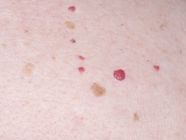Laser hair removal has become a popular solution for permanently getting rid of unwanted hair. While it is generally safe and well-tolerated for most people, it is not completely free from side effects. In rare cases, it can cause skin burns that may range from mild to severe.
To ensure a safe and smooth experience, it’s important to understand the most common causes of laser burns, how to treat them if they occur, and what steps you can take to reduce the risk.
Causes of Laser Burns
Laser burns can occur due to various factors, including your skin type, the device used, or how it is applied. Understanding these factors can help you take precautions and achieve better results. Here are the common causes:
Incorrect device settings: This happens when the technician uses an energy level higher than what your skin can handle, leading to overheating and burns. Qualified professionals adjust the settings based on your skin type and the treatment area.
Low-quality devices
Outdated or poor-quality laser machines may use excessive heat or deliver it inaccurately, increasing the risk of burns.
Dark or sensitive skin
Darker skin has a higher melanin content, which absorbs more laser energy, making it more prone to burns than lighter skin. Sensitive skin may also not tolerate heat as well. Devices like the Nd:YAG laser are considered safer for darker skin tones.
Sun exposure
If the treated area is exposed to sunlight before or after the session without proper protection, it becomes more vulnerable to burns.
Ignoring pre- and post-laser care instructions
This includes getting a tan, waxing shortly before the session, or skipping post-laser soothing creams or gels. Disregarding these precautions can increase the risk of burns.
Below are other reasons:
- Certain medications: Some medications increase skin sensitivity and the risk of burns, such as oral acne treatments (like Roaccutane) or retinoid creams.
- Skin conditions: Skin issues like eczema, psoriasis, or acne may also raise the chances of burns during laser treatments.
How to Treat Laser Burns
If you experience burns after a laser session, follow these tips:
- Run cool water over the area for 10–15 minutes or apply a cold compress or towel soaked in cool water (do not apply ice directly to the skin).
- Apply a soothing and moisturizing cream or gel, such as aloe vera or a fragrance-free medical moisturizer. (Avoid greasy ointments like petroleum jelly or olive oil as they trap heat.) Your doctor may also recommend an antibiotic cream to prevent infection.
- Loosely wrap the area with sterile gauze if blisters are present to protect it from contamination.
- Use over-the-counter pain relievers if needed.
- Avoid sun exposure and keep the area covered with clothing or bandages.
Contact your doctor if the pain is severe or the burn covers a large area (especially after a full-body laser session).
Also notify the laser center as soon as possible so the technician can assess the machine settings and ensure there's no device malfunction.
How to Prevent Laser Burns
To ensure safe and effective laser hair removal, it’s crucial to follow precautions that minimize the risk of burns and help you achieve the best results:
1. Choose a Trusted Clinic
Make sure to go to a reputable clinic known for professionalism and excellent results, such as Al-Ahli Hospital’s dermatology clinics, where the latest high-cooling laser devices are used under the supervision of fully trained professionals.
2. Choose the Right Laser Device
If you use an at-home laser device, opt for a high-quality brand and carefully read the instructions to choose the right intensity and setting for your skin tone and hair color.
Always do a small patch test on a limited area before your session to ensure your skin can tolerate the laser.
3. Follow Pre-Laser Instructions Carefully
- Avoid tanning and direct sun exposure for a specified period before the session.
- Avoid waxing or plucking for several weeks before the treatment.
- Refrain from using products or creams that may increase skin sensitivity, like retinoids or exfoliants with acids such as alpha hydroxy acid.
- Inform your technician if you're taking acne medications like Roaccutane.
4. Post-Session Skin Care
- Apply cold compresses to treated areas to reduce swelling and redness.
- Keep the area protected from sunlight and use high-SPF sunscreen.
- Avoid products containing strong chemicals or fragrances, as they can irritate the skin.
5. Stay in Touch with Your Technician
If you notice any unusual side effects or have concerns, don’t hesitate to contact your laser specialist right away.
References
- AAD - Laser hair removal: FAQs
- NIH NLM - Laser Complications
- American Society of Plastic Surgeons - What are the risks of laser hair removal?






